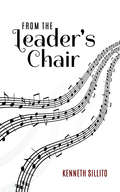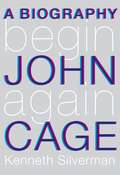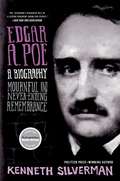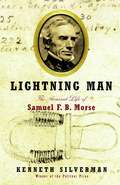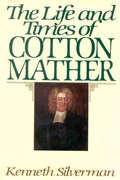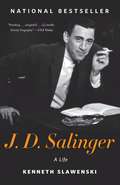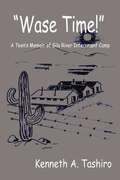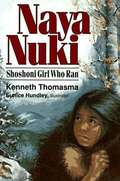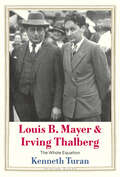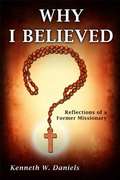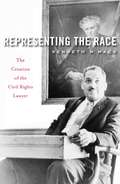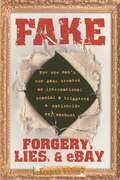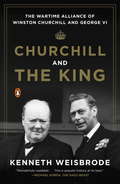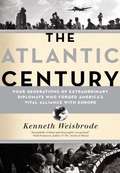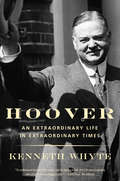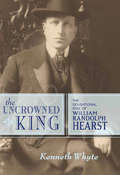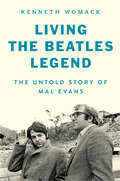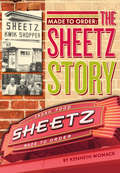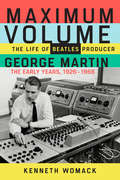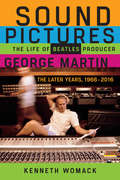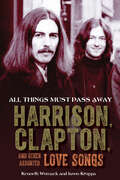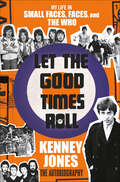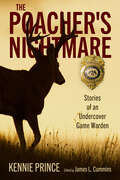- Table View
- List View
From the Leader's Chair
by Kenneth SillitoKenneth Sillito is internationally recognised as one of Britain's most distinguished musicians. Born in Newcastle-upon-Tyne, he studied with David Martin at the Royal Academy of Music, and in Rome with Remy Principe. His first major appointment was as associate leader of the newly created English Chamber Orchestra in 1960. He was subsequently appointed leader and remained with the orchestra until 1973, during which time he established a worldwide reputation as both director and soloist. In 1967, he founded the Gabrieli String Quartet, which swiftly established itself as one of this country's leading chamber ensembles. With the Academy of St Martin-in-the-Fields, which he joined in l980, Kenneth led and directed innumerable distinguished recordings and performances until his retirement in 2012. He was made a Fellow of the Royal Academy in 1971 and awarded the highly prestigious Cobbett Medal in 2017 by The Worshipful Company of Musicians for his services to chamber music.
Begin Again: A Biography of John Cage
by Kenneth SilvermanJohn Cage was a man of extraordinary and seemingly limitless talents: musician, inventor, composer, poet. He became a central figure of the avant-garde early in his life and remained at that pinnacle until his death in 1992 at the age of eighty. Now award-winning biographer Kenneth Silverman gives us the first comprehensive life of this remarkable artist. We follow Cage from his Los Angeles childhood--his father was a successful inventor--through his stay in Paris from 1930 to 1931, where immersion in the burgeoning new musical and artistic movements triggered an explosion of creativity in him and, after his return to the States, into his studies with the seminal modern composer Arnold Schoenberg. We see Cage's early experiments with sound and percussion instruments, and watch as he develops his signature work with prepared piano, radio static, random noise, and silence. We learn of his many friendships over the years with other composers, artists, philosophers, and writers; of his early marriage and several lovers, both female and male and of his long relationship with choreographer Merce Cunningham, with whom he would collaborate on radically unusual dances that continue to influence the worlds of both music and dance. Drawing on interviews with Cage's contemporaries and friends and on the enormous archive of his letters and writings, and including photographs, facsimiles of musical scores, and Web links to illustrative sections of his compositions, Silverman gives us a biography of major significance: a revelatory portrait of one of the most important cultural figures of the twentieth century. The book contains 11 URLs which take you to the publisher's website where you can hear excellent recordings of excerpts from several of Cage's compositions.
Edgar A. Poe
by Kenneth SilvermanFrom a Pulitzer-Prize winning biographer, the most revealing, fascinating, and important biography of one of our greatest literary figures.
Lightning Man: The Accursed Life of Samuel F. B. Morse
by Kenneth SilvermanIn this brilliantly conceived and written biography, Pulitzer Prize winning Kenneth Silverman gives us the long and amazing life of the man eulogized by the New York Herald in 1872 as perhaps the most illustrious American of his age. Silverman presents Samuel Morse in all his complexity. There is the gifted and prolific painter (more than three hundred portraits and larger historical canvases) and pioneer photographer, who gave the first lectures on art in America, became the first Professor of Fine Arts at an American college (New York University), and founded the National Academy of Design. There is the republican idealist, prominent in antebellum politics, who ran for Congress and for mayor of New York. But most important, there is the inventor of the American electromagnetic telegraph, which earned Morse the name Lightning Man and brought him the fame he sought. In these pages, we witness the evolution of the great invention from its inception as an idea to its introduction to the world--an event that astonished Morse's contemporaries and was considered the supreme expression of the country's inventive genius. We see how it transformed commerce, journalism, transportation, military affairs, diplomacy, and the very shape of daily life, ushering in the modern era of communication. But we discover as well that Morse viewed his existence as accursed rather than illustrious, his every achievement seeming to end in loss and defeat: his most ambitious canvases went unsold; his beloved republic imploded into civil war, making it unlivable for him; and the commercial success of the telegraph engulfed him in lawsuits challenging the originality and ownership of his invention. Lightning Man is the first biography of Samuel F. B. Morse in sixty years. It is a revelation of the life of a fascinating and profoundly troubled American genius.
The Life and Times of Cotton Mather
by Kenneth SilvermanA biography of the most celebrated of all New England Puritans, at once a sophisticated work which succeeds admirably in presenting a complete portrait of a complex man and a groundbreaking study that accurately portrays Mather and his contemporaries as the first true American rather than European expatriates.<P><P> Pulitzer Prize Winner
J. D. Salinger: A Life
by Kenneth SlawenskiOne of the most popular and mysterious figures in American literary history, author of the classic Catcher in the Rye, J. D. Salinger eluded fans and journalists for most of his life. Now comes a new biography that Peter Ackroyd in The Times of London calls "energetic and magnificently researched"--a book from which "a true picture of Salinger emerges." Filled with new information and revelations--garnered from countless interviews, letters, and public records--J. D. Salinger presents an extraordinary life that spanned nearly the entire twentieth century. Kenneth Slawenski explores Salinger's privileged youth, long obscured by misrepresentation and rumor, revealing the brilliant, sarcastic, vulnerable son of a disapproving father and doting mother and his entrance into a social world where Gloria Vanderbilt dismissively referred to him as "a Jewish boy from New York." Here too are accounts of Salinger's first broken heart--Eugene O'Neill's daughter, Oona, left him for the much older Charlie Chaplin--and the devastating World War II service ("a living hell") of which he never spoke and which haunted him forever.J. D. Salinger features all the dazzle of this author's early writing successes, his dramatic encounters with luminaries from Ernest Hemingway to Laurence Olivier to Elia Kazan, his surprising office intrigues with famous New Yorker editors and writers, and the stunning triumph of The Catcher in the Rye, which would both make him world-famous and hasten his retreat into the hills of New Hampshire.Whether it's revealing the facts of his hasty, short-lived first marriage or his lifelong commitment to Eastern religion, which would dictate his attitudes toward sex, nutrition, solitude, and creativity, J. D. Salinger is this unique author's unforgettable story in full--one that no lover of literature can afford to miss. From the Hardcover edition.
Air Force One: A History of the Presidents and Their Planes
by Kenneth T. WalshFrom FDR's prop-driven Pan Am to the glimmering blue and white jumbo 747 on which George W. Bush travels, the president's plane has captured the public's awe and imagination, and is recognized around the world as a symbol of American power. In this unique book, Kenneth Walsh looks at the decisions that our last 12 presidents made on the plane; the personality traits and peccadilloes they revealed when their guard was down; and the way they each established a distinctive mood aboard that was a reflection of their times, as well as their individual personalities. Based on interviews with four living presidents, scores of past and present White House officials, and staff and crew members of Air Force One, Walsh's book reveals countless fascinating stories of life aboard the 'flying White House.' It also features descriptions of the food, the decor, the bedrooms, the medical clinic, and much more.
Wase Time!: A Teen's Memoir of Gila River Internment Camp
by Kenneth Tashiro"Wase Time!" is an autobiography of my teen age years in Gila River Internment Center, Arizona. I tell my story in the first person and I include much of the humor and conversation that was popular at that time. My story begins with the aftermath of Sunday, December 7, 1941. On Monday, the 8th, I was relieved of my 6th grade job raising the American flag. On March 28, 1942, my family and I moved to Del Rey, California, which was in the "Free Zone." In July, we were told all those of Japanese ancestry would have to leave California. On August 6, we were evacuated to Gila, except for my mom who was 8 months pregnant. Gila was a big center made up of two camps: camp 1 (Canal), and camp 2 (Butte). We lived briefly in Canal, then moved to Butte because of my dad's job. I made friends with my neighbors, and Hank introduced me to many youth who were from the French Camp/Stockton area. I became a member of the Ramblers, a team which played may sports, and we won the championship of the Southwestern Football League in 1943-44. Other happy memories were my mom and sister's arrival from Fresno Assembly Center, movie night, the warehouse gang, the Boy Scouts, and my getting a response to a fan letter that I wrote to Maureen O'Hara. Sad memories include Hank's departure to Tule Lake Relocation Center, my being called a "nigger," and what I did with the letter and photos of Maureen O'Hara. On March 28, 1945, my grandfather and I left Gila to go to Chicago, Illinois, to visit relatives. I was send out of camp for being an unsavory character, according to my mom. On the train ride, I thought of all my experiences in camp. Was being in camp "wase time"?
Naya Nuki: Shoshoni Girl Who Ran (Amazing Indian Children series:)
by Kenneth ThomasmaAfter being taken prisoner by an enemy tribe, a Shoshoni girl escapes and makes a thousand-mile journey through the wilderness in search of her own people. Naya Nuki was only eleven when she was taken captive by a rival Indian tribe. She and her best friend, Sacajawea, were forced to march 1000 miles from Montana to a North Dakota Indian village, where Naya Nuki became a slave. Escape and reunion with her Shoshoni people was the only thing on Naya Nuki’s mind. She secretly began to prepare for her escape along the Missouri River. All during the long march east she had been watching for landmarks and hiding places. Finally the opportunity to run away came. Naya Nuki traveled alone in the wilderness for more than a month. Her journey presents an amazing story of danger, courage, and survival skills. Pictures are described Intermediate Reading 9-13 There are more books from the Amazing Indian Children series by Kenneth Thomasma in the Bookshare library with more to come.
Louis B. Mayer and Irving Thalberg: The Whole Equation (Jewish Lives)
by Kenneth TuranKenneth Turan brings to life the extraordinary partnership of Louis B. Mayer and Irving Thalberg and their role in creating the film industry as we know it &“Sharply observant.&”—Farran Smith Nehme, Wall Street Journal One was a tough junkman&’s son, the other a cosseted mama&’s boy, but they dreamed the same mighty dream: that the right movies could make a profit and change both the culture and individual lives. Sharing a religion and an evangelical zeal for film, Louis B. Mayer (1884–1957) and Irving Thalberg (1899–1936) were unlikely partners in one of the most significant collaborations in movie history. Over the course of their decade-long relationship, as key players at Metro-Goldwyn-Mayer and major players in Hollywood, they joined forces in redefining and mastering the template for the film industry. Mayer, older by more than a dozen years, was the business-minded face of the studio, while Thalberg worked closely with the creative corps, especially writers; together they rarely set a foot wrong. And while Mayer initially viewed Thalberg as the son he never had, the two would go from passionate friends to near enemies before Thalberg&’s shocking death at the age of thirty-seven. In the first joint biography of the two men in fifty years, film critic Kenneth Turan traces their fraught relationship while examining the complicated history of Jewish identity in Hollywood.
Why I Believed: Reflections of a Former Missionary
by Kenneth W. DanielsThis is a story of a true Christian who believed for nearly three decades, having grown up the son of evangelical missionary parents, later becoming a missionary himself. Yet he slowly lost his faith and now no longer holds it. In this part-autobiography, part-exposé, Ken traces his journey from evangelical missionary to secular humanist while remaining part of a committed Christian family. He looks back at a number of reasons he remained a believer for over a decade after his initial doubts began at university, critically evaluating each one in a separate chapter. Whether or not you agree with Ken's conclusions, you will find his journey and his reasons for taking it fascinating and informative. You will end up better understanding, if not appreciating, the mind of apostates whose desire is to follow the evidence wherever it leads.
Representing the Race
by Kenneth W. MackRepresenting the Race tells the story of an enduring paradox of American race relations, through the prism of a collective biography of African American lawyers who worked in the era of segregation. Practicing the law and seeking justice for diverse clients, they confronted a tension between their racial identity as black men and women and their professional identity as lawyers. Both blacks and whites demanded that these attorneys stand apart from their racial community as members of the legal fraternity. Yet, at the same time, they were expected to be "authentic"-that is, in sympathy with the black masses. This conundrum, as Kenneth W. Mack shows, continues to reverberate through American politics today. Mack reorients what we thought we knew about famous figures such as Thurgood Marshall, who rose to prominence by convincing local blacks and prominent whites that he was-as nearly as possible-one of them. But he also introduces a little-known cast of characters to the American racial narrative. These include Loren Miller, the biracial Los Angeles lawyer who, after learning in college that he was black, became a Marxist critic of his fellow black attorneys and ultimately a leading civil rights advocate; and Pauli Murray, a black woman who seemed neither black nor white, neither man nor woman, who helped invent sex discrimination as a category of law. The stories of these lawyers pose the unsettling question: what, ultimately, does it mean to "represent" a minority group in the give-and-take of American law and politics?
Fake: Forgery, Lies, & Ebay
by Kenneth WaltonIt was the golden age of eBay. Optimistic bidders went online to the world's largest flea market in droves, ready to spend cash on everything from garden gnomes to Mercedes convertibles. Among them were art collectors willing to spend big money on unseen paintings, hoping to buy valuable pieces of art at below-market prices. EBay also attracted the occasional con artist unable to resist the temptation of abusing a system that prided itself on being "based on trust. " Kenneth Walton -- once a lawyer bound by the ethics of his profession to uphold the law -- was seduced by just such a con artist and, eventually, became one himself. Ripped from the headlines of the New York Times, the first newspaper to break the story, Fake describes Walton's innocent beginnings as an online art-trading hobbyist and details the downward spiral of greed that ultimately led to his federal felony conviction. What started out as a satisfying exercise in reselling thrift store paintings for a profit in order to pay back student loans and mounting credit card debt soon became a fierce addiction to the subtle deception of luring unsuspecting bidders into overpaying for paintings of questionable origins. In a landscape peopled with colorful eccentrics hoping to score museum-quality paintings at bargain prices, Walton entered into a partnership with Ken Fetterman, an unslick (yet somehow very effective) con man. Over the course of eighteen months they managed to take in hundreds of thousands of dollars by selling forged paintings and bidding on their own auctions to drive up the prices. When their deception was discovered and made international headlines, Walton found himself stalked by reporters and federal agents while Fetterman went on the lam, sparking a nationwide FBI manhunt. His elaborate game of cat and mouse lasted nearly three years, until the feds caught up with him after a routine traffic violation and brought him to justice. In this sensational story of the seductive power of greed, Kenneth Walton breaks his silence for the first time and, in his own words, details the international scandal that forever changed the way eBay does business.
Churchill and the King
by Kenneth WeisbrodeFor fans of The King's Speech, the intriguing bond between monarch and prime minister and its crucial role during World War II The political and personal relationship between King George VI and Winston Churchill during World War II is one that has been largely overlooked throughout history, yet the trust and loyalty these men shared helped Britain navigate its perhaps most trying time. Despite their vast differences, the two men met weekly and found that their divergent virtues made them a powerful duo. The king’s shy nature was offset by Churchill’s willingness to cast himself as the nation’s savior. Meanwhile, Churchill’s complicated political past was given credibility by the king’s embrace and counsel. Together as foils, confidants, conspirators, and comrades, the duo guided Britain through war while reinspiring hope in the monarchy, Parliament, and the nation itself. Books about these men as individuals could fill a library, but Kenneth Weisbrode’s study of the unique bond between them is the first of its kind. .
Churchill and the King
by Kenneth WeisbrodeFor fans of The King's Speech, the intriguing bond between monarch and prime minister and its crucial role during World War IIThe political and personal relationship between King George VI and Winston Churchill during World War II is one that has been largely overlooked throughout history, yet the trust and loyalty these men shared helped Britain navigate its perhaps most trying time.Despite their vast differences, the two men met weekly and found that their divergent virtues made them a powerful duo. The king's shy nature was offset by Churchill's willingness to cast himself as the nation's savior. Meanwhile, Churchill's complicated political past was given credibility by the king's embrace and counsel. Together as foils, confidants, conspirators, and comrades, the duo guided Britain through war while reinspiring hope in the monarchy, Parliament, and the nation itself.Books about these men as individuals could fill a library, but Kenneth Weisbrode's study of the unique bond between them is the first of its kind.
The Atlantic Century: Four Generations of Extraordinary Diplomats Who Forged America's Vital Alliance with Europe
by Kenneth WeisbrodeThe Atlantic Century is the first major historical study to re-examine the American-European partnership with an emphasis on the personalities behind the policy. Our strong system of European alliances built during the last century did not happen serendipitously. It was carefully constructed and cemented by a network of diplomats and politicians, who imagined, built, and sustained a new international system. In their vision, America and Europe were part of a single cooperative transatlantic community- not rivals or one another's periodic savior, as they had been during two world wars.Historian Kenneth Weisbrode reveals-for the first time, warts and all-the insider's story of such well-known figures as Dean Acheson, W. Averell Harriman, and Henry Kissinger. It is the story of how and why the State Department's Bureau of European Affairs (EUR)-the "mother bureau" as it was called, the nerve center of the Atlanticists-rose to become the U.S. government's preeminent foreign policy office.In today's fractious world, The Atlantic Century is both timely and telling.
Hoover: An Extraordinary Life in Extraordinary Times
by Kenneth WhyteThe definitive biography of Herbert Hoover, one of the most remarkable Americans of the twentieth century--a revisionist account that will forever change the way Americans understand the man, his presidency, and his battle against the Great Depression. A poor orphan who built a fortune, a great humanitarian, a president elected in a landslide and then routed in the next election, arguably the father of both New Deal liberalism and modern conservatism--Herbert Hoover is also one of our least understood presidents, conventionally seen only as a heartless failure for his handling of the Great Depression. Kenneth Whyte fully captures this rich, dramatic life: from Hoover's difficult childhood to his meteoric business career, his work saving hundreds of thousands of lives during World War I and after the 1927 Mississippi floods, his presidency, his painful defeat by Roosevelt, and his return to grace as Truman's emissary to help European refugees after World War II. Whyte brings to life Hoover's complexity and contradictions--his modesty and ambition, ruthlessness and extreme generosity--as well as his political legacy. Here is the epic, poignant story of the poor boy who became the most accomplished figure of his time, who worked ceaselessly to fight the Depression yet became the public face of America's greatest economic crisis. Here, for the first time, is the definitive biography that captures the full scale of this extraordinary life.
The Uncrowned King: The Sensational Rise of William Randolph Hearst
by Kenneth WhyteA lively, unexpected, and impeccably researched piece of popular history, The Uncrowned King reveals how an unheralded young newspaperman from San Francisco arrived in New York and created the most successful daily of his time, pushing the medium to an unprecedented level of influence and excitement, and leading observers to wonder if newspapers might be "the greatest force in civilization," more powerful even than kings and popes and presidents.Featuring an eight-page insert of black and white photographs, The Uncrowned King offers a window onto the media world at the turn of the 19th century, as seen by its most successful and controversial figure, William Randolph Hearst. Kenneth Whyte's anecdotal, narrative style chronicles Hearst's rivalry with Joseph Pulitzer, the undisputed king of New York journalism, in the most spectacular newspaper war of all time. They battled head-to-head for three years, through the thrilling presidential election campaign of 1896 and the Spanish-American War-a conflict that Hearst was accused of fomenting and that he covered in person. By 1898, Hearst had supplanted Pulitzer as the dominant force in New York publishing, and was well on his way to becoming one of the most powerful and fascinating private citizens in 20th-century America.
Living the Beatles Legend: The Untold Story of Mal Evans
by Kenneth WomackThe first full-length biography of Mal Evans, the Beatles’ beloved friend, confidant, and roadie. Malcolm Evans, the Beatles’ long-time roadie, personal assistant, and devoted friend, was an invaluable member of the band’s inner circle. A towering figure in horn-rimmed glasses, Evans loomed large in the Beatles’ story, contributing at times as a performer and sometime lyricist, while struggling mightily to protect his beloved “boys.” He was there for the whole of the group’s remarkable, unparalleled story: from the Shea Stadium triumph through the creation of the timeless cover art for Sgt. Pepper’s Lonely Hearts Club Band and the famous Let It Be rooftop concert. Leaving a stable job as telecommunications engineer to serve as road manager for this fledgling band, Mal was the odd man out from the start—older, married with children, and without any music business experience. And yet he threw himself headlong into their world, traveling across the globe and making himself indispensable. In the years after the Beatles’ disbandment, Big Mal continued in their employ as each embarked upon solo careers. By 1974, he was determined to make his name as a songwriter and record producer, setting off for a new life in Los Angeles, where he penned his memoirs. But in January 1976, on the verge of sharing his book with the world, Evans’s story came to a tragic end during a domestic standoff with the LAPD.For Beatles devotes, Mal’s life and untimely death have always been shrouded in mystery. For decades, his diaries, manuscripts, and vast collection of memorabilia was missing, seemingly lost forever…until now. Working with full access to Mal’s unpublished archives and having conducted hundreds of new interviews, Beatles’ scholar and author Kenneth Womack affords readers with a full telling of Mal’s unknown story at the heart of the Beatles’ legend. Lavishly illustrated with unseen photos and ephemera from Mal’s archives, Living the Beatles’ Legend: The Untold Story of Mal Evans is the missing puzzle piece in the Fab Four’s incredible story.
Made to Order: The Sheetz Story
by Kenneth WomackMade To Order: The Sheetz Story traces the fascinating history of Sheetz, Inc., a regional convenience retailer that battled the odds and cemented its name among the acclaimed ranks of America's most successful private companies. From its humble dairy store origins in Pennsylvania, Sheetz became a convenience-store giant, amassing hundreds of locations across six states, and along the way, combined numerous creative marketing campaigns with retail innovations to shape the Sheetz recipe for success. Made To Order: The Sheetz Story narrates how the company remade itself in the face of dramatically shifting demographics, bravely stood up for its customer base when confronted with a serious crisis, and emerged as a revered and much-beloved retail phenomenon.
Maximum Volume: The Life of Beatles Producer George Martin, The Early Years, 1926–1966
by Kenneth WomackMaximum Volume offers a glimpse into the mind, the music, and the man behind the sound of the Beatles. George Martin's working-class childhood and musical influencesprofoundly shaped his early career in the BBC's Classical Music department and as head of the EMI Group's Parlophone Records. Out of them flowed the genius behind his seven years producing the Beatles' incredible body of work, including such albums as Rubber Soul, Revolver, Sgt. Pepper's Lonely Hearts Club Band, and Abbey Road.The first book of two, Maximum Volume traces Martin's early years as a scratch pianist, his life in the Fleet Air Arm during the Second World War, and his groundbreaking work as the head of Parlophone Records, when Martin saved the company from ruin after making his name as a producer of comedy recordings. In its most dramatic moments, Maximum Volume narrates the story of Martin's unlikely discovery of the Beatles and his painstaking efforts to prepare their newfangled sound for the British music marketplace. As the story unfolds, Martin and the band craft numerous number-one hits, progressing toward the landmark album Rubber Soul—all of which bear Martin's unmistakable musical signature.
Sound Pictures: The Life of Beatles Producer George Martin, The Later Years, 1966–2016
by Kenneth WomackMore than anyone besides the bandmates themselves, George Martin was the man who created the unique sound of the Beatles. Sound Pictures offers a powerful and intimate account of how he did so. The second and final volume of the definitive biography of the man, Sound Pictures traces the story of the Beatles' breathtaking artistic trajectory after reaching the creative heights of Rubber Soul. As the bandmates engage in brash experimentation both inside and outside the studio, Martin toils along with manager Brian Epstein to consolidate the Beatles' fame in the face of growing sociocultural pressures, including the crisis associated with the "Beatles are more popular than Jesus" scandal. Meanwhile, he also struggles to make his way as an independent producer in the highly competitive world of mid-1960s rock 'n' roll. As Martin and the Beatles create one landmark album after another, including such masterworks as Revolver, Sgt. Pepper's Lonely Hearts Club Band, The Beatles (The White Album), and Abbey Road, the internal stakes and interpersonal challenges become ever greater. During his post-Beatles years, Martin attempts to discover new vistas of sound recording with a host of acts, including Jeff Beck, America, Cheap Trick, Paul McCartney, and Elton John, his creative breakthroughs followed by unprecedented commercial success. Eventually, though, all roads bring Martin back to the Beatles, as the group seeks out new ways to memorialize their achievement under the supervision of the man who has come to be known as Sir George. Now, more than fifty years after the Beatles' revolutionary triumphs, Martin's singular stamp on popular music has become more vital than ever, as successive generations discover the magic of the Beatles and their groundbreaking sound.
All Things Must Pass Away: Harrison, Clapton, and Other Assorted Love Songs
by Kenneth Womack and Jason Kruppa"Womack and Kruppa present a thorough history of Harrison and Clapton's songmaking and recording sessions." — BooklistNewly revised and expanded, this paperback edition features exclusive material from the Malcolm Frederick Evans archives and draws on rare material released by the Harrison Estate. A new appendix includes a detailed sessionography and personnel listings for All Things Must Pass, assembled from recently discovered documentation. George Harrison and Eric Clapton embarked upon a singular personal and creative friendship that impacted rock's unfolding future in resounding and far-reaching ways. All Things Must Pass Away: Harrison, Clapton, and Other Assorted Love Songs traces the emergence of their relationship from 1968 though the early 1970s and the making of their career-defining albums, both released in November 1970. Authors Womack and Kruppa devote close attention to the climax of Harrison and Clapton's shared musicianship— the creation of All Things Must Pass, Harrison's powerful emancipatory statement in the wake of the Beatles, and Layla and Other Assorted Love Songs, Clapton's impassioned reimagining of his art via Derek and the Dominos— two records that advanced rock 'n' roll from a windswept 1960s idealism into the wild and expansive new reality of the 1970s. All Things Must Pass Away reveals the foundations of Harrison and Clapton's friendship, focusing on the ways their encouragement and support of each other drove them to produce works that would cast long shadows over the evolving world of rock music.
Let the Good Times Roll: My Life in Small Faces, Faces, and The Who
by Kenney Jones“Jones, the drummer for the Who after Keith Moon died, recalls his musical life in this modest and self-effacing rock and roll memoir.” —Publishers WeeklyFrom the Mod revolution and the British Invasion of the 1960s, through the psychedelic era of the 1970s, and into the exuberance and excesses of stadium rock in the 1980s, Kenney Jones helped to build rock and roll as we know it. He was the beat behind three of the world’s most enduring and significant bands.He wasn’t just in the right place at the right time. Along with Keith Moon, John Bonham, and Charlie Watts, Jones is regarded as one of the greatest drummers of all time, sought after by a wide variety of the best-known and best-selling artists to bring his unique skill into the studio for the recording of classic albums and songs—including, of course, the Rolling Stones’s “It’s Only Rock ‘n’ Roll (But I Like It).”And Jones is no shallow rock star. He may play polo with royalty from across the globe now, but this is the story of a ragamuffin from the East End of London, a boy who watched his bandmates, friends since his teens, die early, combated dyslexia to find a medium in which he could uniquely excel, and later found a way through the wilderness years when the good times seemed to have gone and he had little to fall back on.Kenney Jones has seen it all, played with everyone, and partied with all of them. Let the Good Times Roll is a breathtaking immersion into music past that leaves readers feeling as if they lived it too.
The Poacher's Nightmare: Stories of an Undercover Game Warden
by Kennie PrinceRaccoons are not the only bandits wearing masks in the wilderness. Growing up, author Kennie Prince spent most of his time in the woods and creeks near his home in Rankin County, Mississippi. A highly skilled outdoorsman, Prince began his career with the Mississippi Department of Wildlife Conservation in 1983 and dedicated his life to protecting Mississippi’s fish and wildlife resources in dangerous undercover work. The Poacher’s Nightmare: Stories of an Undercover Game Warden contains dozens of hair-raising accounts of covert wildlife operations, often spanning years, requiring ingenious planning, complicated secrecy, and deft coordination.Prince infiltrated bloody-minded, wary criminal groups, winning their trust. When his traps were fully set, he involved other state and federal law enforcement officials to bring an abrupt halt to abominable thefts of vast fish and wildlife resources from the public trust. Smart, creative, knowledgeable, tenacious, disciplined, passionate, and a natural-born actor, Prince bore a unique skillset that made him an ideal fit for this perilous undertaking. This memoir details how Prince gained the confidence of tightly knit circles of loyal, leery poachers and put an end to their destructive evil.
